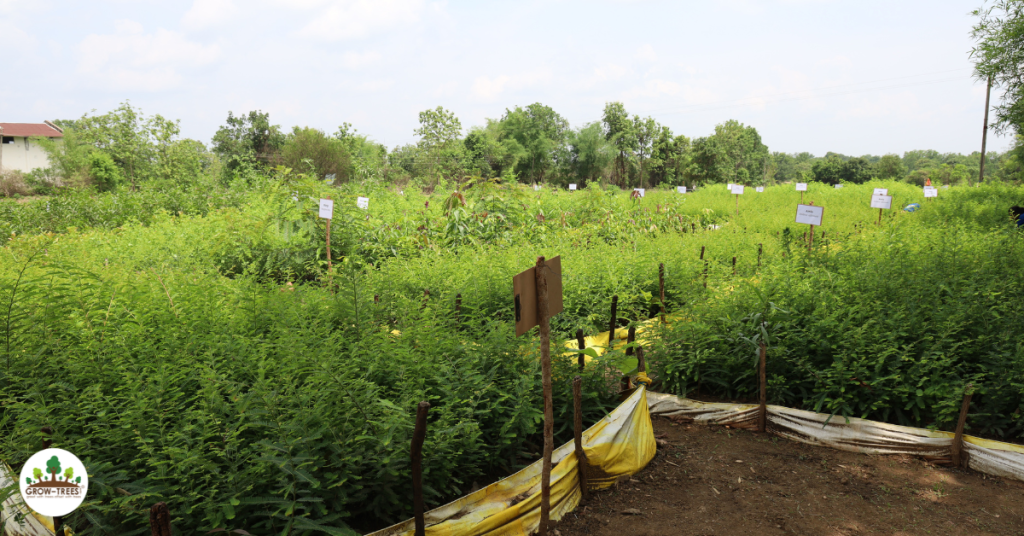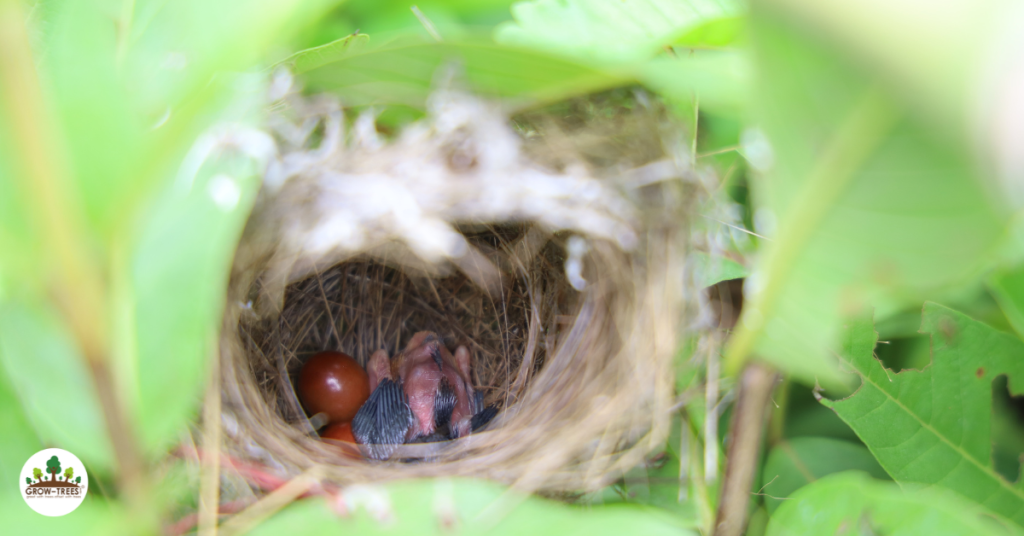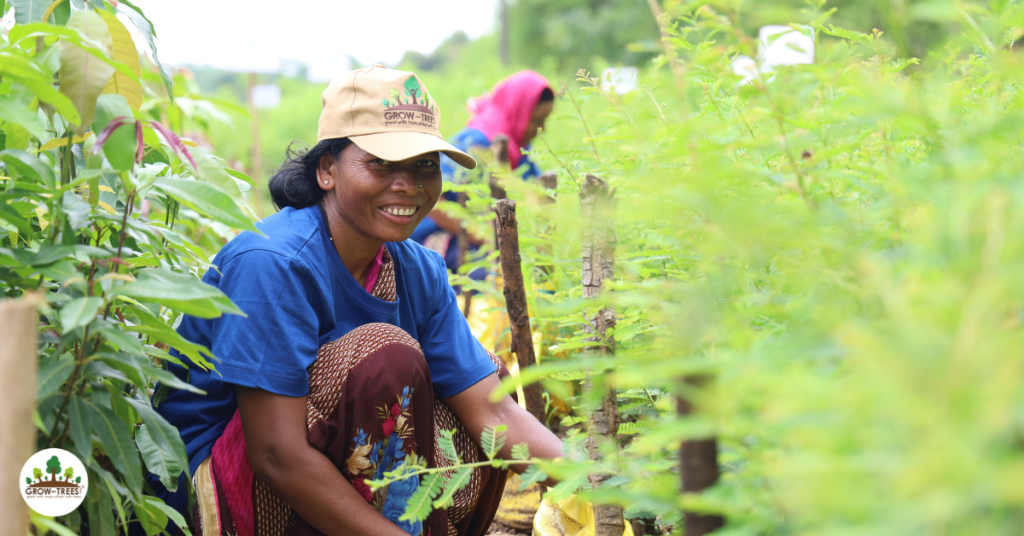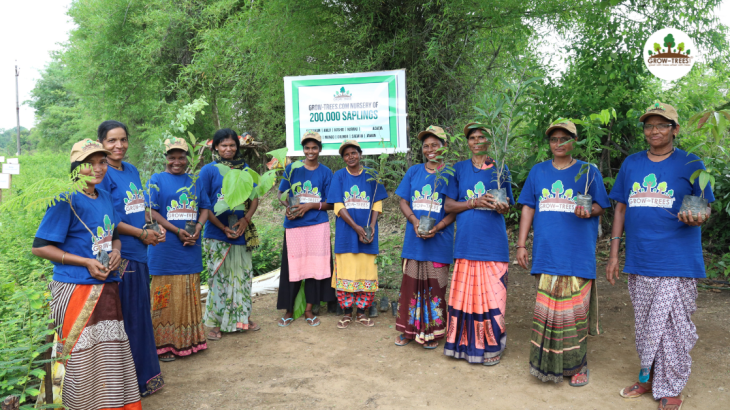At Grow-Trees, visiting our planting sites is one of our most integral and cherished aspects of our work – they not only serve as essential monitoring opportunities for the planting work but they also consistently provide fresh insights, exciting discoveries and heart-warming encounters.
Our latest expedition took us to the Pench Tiger Reserve in Ramtek, Nagpur. Although many species call the Ramtek forest home, its most famous inhabitant is the tiger. While developing one of our flagship projects, Trees for Tigers, we have taken into consideration the needs of the area. This endeavor is founded on the interconnectedness of trees and tigers. Through this initiative, we seek to create a robust landscape that will benefit both the tigers and the surrounding communities.

The first stop in our trip was the nursery – it is here where everything begins to take shape. Our planting team takes close to 6 months to prepare the saplings and nurture them with care till they are ready to be planted. Witnessing the saplings flourishing was such a fulfilling experience. Among the various saplings were Teak, Sheesham and Amla to name a few. Each of them contributed to the region’s biodiversity and ecological balance.

During our time at the nursery, we were delighted to discover a small sunbird nest hidden among the saplings. It served as a poignant reminder that even in the early stages, these saplings were already supporting and sheltering life.

We also had the privilege of meeting the dedicated local plantation workers. Spending time with them and listening to their stories was genuinely heartwarming. Knowing that our project has been instrumental in improving their lives filled us with a profound sense of gratitude.
The visit to the ‘Trees for Tigers’ nursery and planting sites and interacting with the planting team, reaffirmed our commitment to our goal, that is, fostering environmental preservation but also positively impacting the lives of those who call this beautiful region home.
Here is how trees can help create a sustainable environment for both wildlife and the local community:
- Trees provide diverse and suitable habitats for tigers, which depend on forested habitats for resources and shelter. Tree species such as Teak and Sheesham offer shade, cover, and nesting sites for tigers and their prey.
- Trees also attract herbivores, which are the main prey for tigers. By providing an abundance of food sources for herbivores, trees ensure a steady availability of prey for tigers, leading to a sustainable balance in predator-prey relationships. This balance supports the survival of apex predators like tigers, which in turn maintain the ecological balance and stability of their habitats.
- Diverse tree species allow for greater adaptability to changing environmental conditions and reduce the pressure on resources. Planting of trees also mitigate climate change by sequestering carbon dioxide and releasing oxygen, which benefits both tigers and their habitats.
Tree planting is a collaborative effort and you too can be a part of this initiative by planting trees online with us. The trees you plant contribute to expanding our forest, protecting wildlife and supporting our rural communities.
Plant trees online now!
